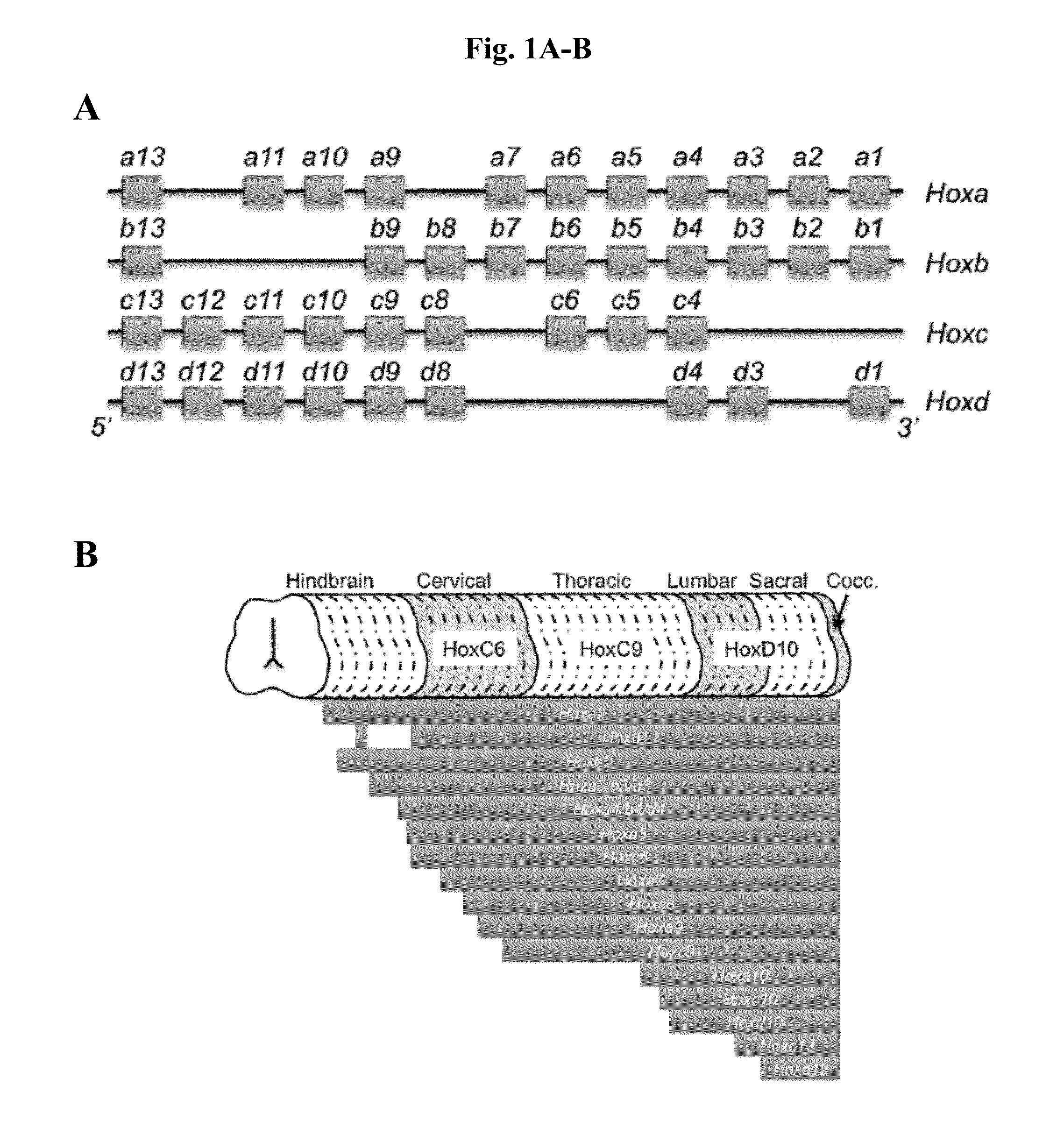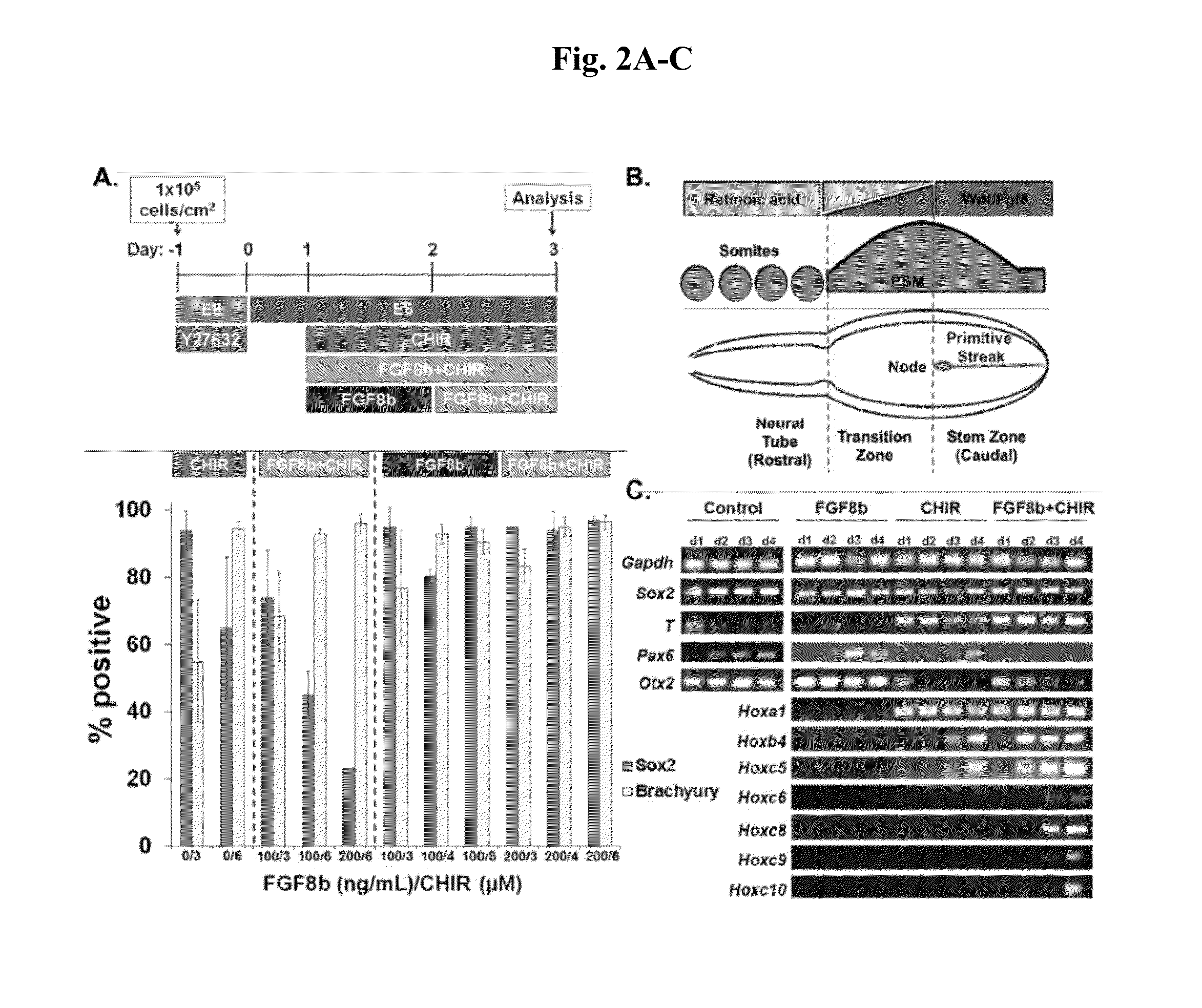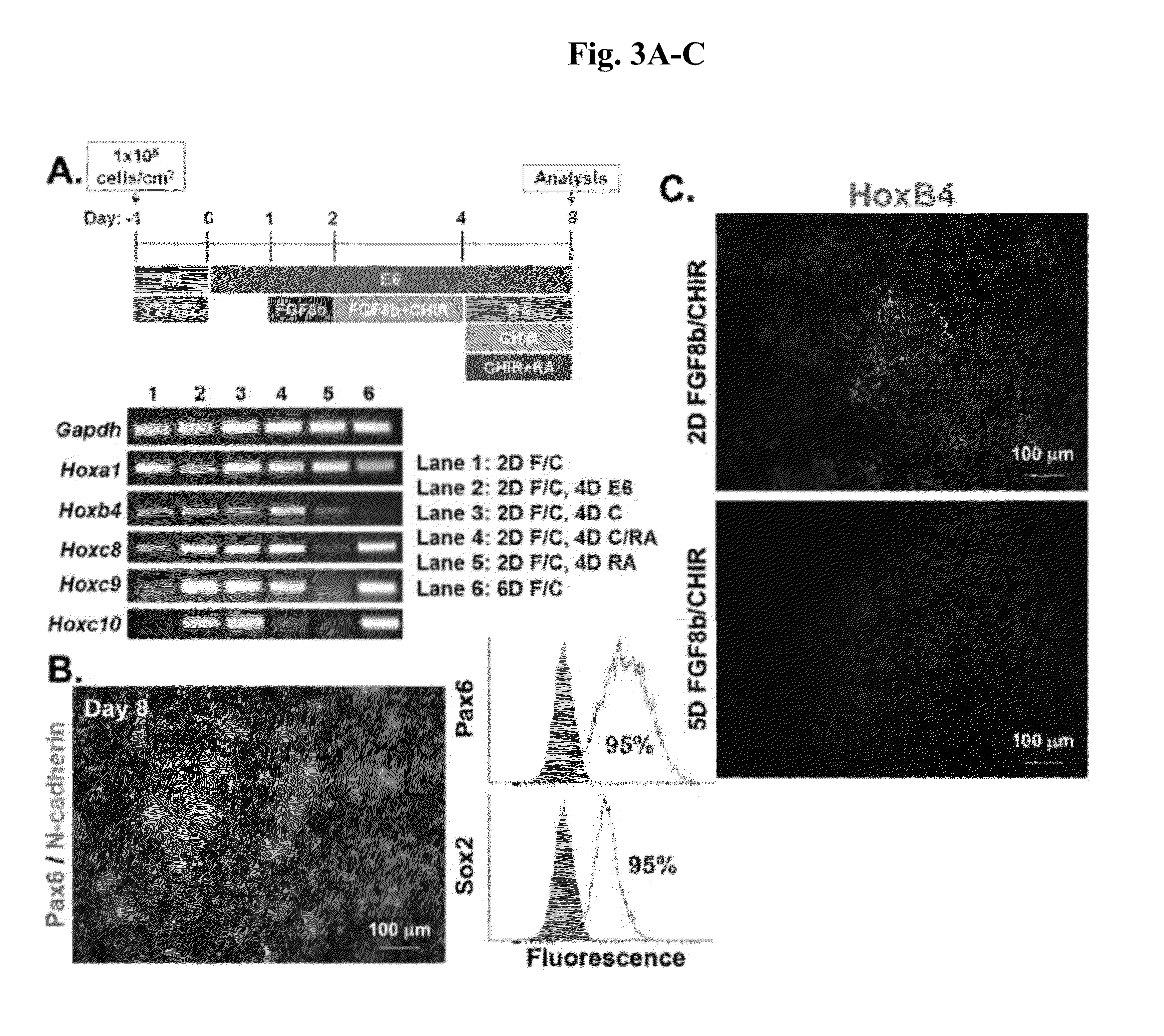Compositions and methods for precise patterning of posterior neuroectoderm from human pluripotent stem cells
- Summary
- Abstract
- Description
- Claims
- Application Information
AI Technical Summary
Benefits of technology
Problems solved by technology
Method used
Image
Examples
example 1
Specification of HOX-Expressing Posterior Caudal Lateral Epiblast from hPSCs
[0140]During formation of the hindbrain and spinal portions of the neural tube, it is currently believed that signaling by FGFs and Wnts maintain an undifferentiated, Sox2− / Pax6− caudal lateral epiblast stem-like phenotype in the posterior neural tube, whereas retinoic acid (RA) secreted from newly formed somites in the paraxial mesoderm counteracts such signaling to force differentiation to a Sox2+ / Pax6+ neuroectoderm or neuroepithelial state. Moreover, since forebrain explants exposed to FGFs and Wnts can be re-specified to Hox expressing neural tissue, we hypothesized that these morphogens can be used to induce Hox gene expression as hPSCs differentiate into caudal lateral epiblasts. Further, since RA signaling in the neural tube occurs upon regression of the node and concurrent somitogenesis, it can be hypothesized that there is temporal variation in the duration of FGF and Wnt exposure experienced by ca...
example 2
Sequential Treatment of hPSCs with FGF8b and an Activator of β-Catenin Pathway Signaling Yields a Sox2+ / Brachyury+ / Pax6− Caudal Lateral Epiblast Intermediate
[0147]In posterior neural tube development, caudal lateral epiblasts initially express both the neuroectoderm marker Sox2 and the mesoderm marker Brachyury (T). Since these cells form HOX-expressing portions of the neural tube, we hypothesized that they would be sensitive to morphogenetic cues that pattern HOX genes, and thus attempted to derive such cells from hPSCs. Signaling via both Fibroblast growth factor-8 (Fgf8) and Wnts has been shown to play a role in formation of the posterior neural tube. We therefore exposed H9 (WA09) hPSCs cultured in E6 medium supplemented with recombinant Fgf8b and CHIR 99021 early in our E6 neural differentiation method. From flow cytometry analysis, we observed that sequential addition of Fgf8b and then Fgf8b / CHIR 99021 yielded a nearly homogenous culture of Sox2+ / Brachyury+ caudal lateral epib...
example 3
Progression of HOX Gene Expression In Vitro can be Controlled During Differentiation of hPSCs to Caudal Lateral Epiblasts
[0148]In order to determine whether the progression of HOX gene activation is morphogen concentration-dependent, and whether it can be halted at the onset of expression of specific HOX genes, we performed the same experiment as described in Example 1, but at higher morphogen concentrations followed by multiple culture variations to inhibit the effects of FGF8b and CHIR 99021 (FIG. 3A). After 48 hours of Fgf8b (200 ng / m1) and CHIR 99021 (4 μm) treatment, HOX gene activation in the caudal lateral epiblasts had reached the Hoxc9 locus as opposed to reaching just Hoxc5 under the lower morphogen conditions (FIGS. 2C and 3A), thereby indicating that the rate of Hox gene activation may be morphogen concentration-dependent. Additionally, we demonstrated that removal of Fgf8b and CHIR 99021 and addition of RA is sufficient to halt Hox gene activation, as observed by the la...
PUM
 Login to View More
Login to View More Abstract
Description
Claims
Application Information
 Login to View More
Login to View More - R&D Engineer
- R&D Manager
- IP Professional
- Industry Leading Data Capabilities
- Powerful AI technology
- Patent DNA Extraction
Browse by: Latest US Patents, China's latest patents, Technical Efficacy Thesaurus, Application Domain, Technology Topic, Popular Technical Reports.
© 2024 PatSnap. All rights reserved.Legal|Privacy policy|Modern Slavery Act Transparency Statement|Sitemap|About US| Contact US: help@patsnap.com










